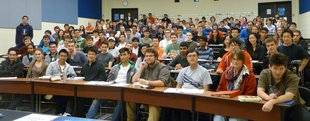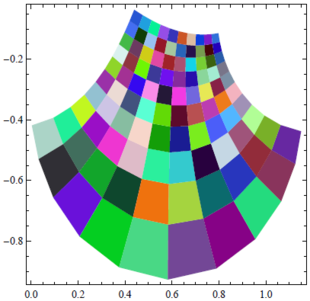12-240/Classnotes for Tuesday October 23: Difference between revisions
From Drorbn
Jump to navigationJump to search
(→==) |
No edit summary |
||
| Line 28: | Line 28: | ||
Image:12-240-Oct23-3.jpeg|Page 3 |
Image:12-240-Oct23-3.jpeg|Page 3 |
||
Image:12-240-Oct23-4.jpeg|Page 4 |
Image:12-240-Oct23-4.jpeg|Page 4 |
||
</gallery> |
|||
== Lecture notes scanned by [[User:KJMorenz|KJMorenz]] == |
|||
<gallery> |
|||
Image:12-240-Oct30-2.jpg|Page 1 |
|||
</gallery> |
</gallery> |
||
Revision as of 16:56, 30 October 2012
| |||||||||||||||||||||||||||||||||||||||||||||||||||||||||
==
Definition: L(V,W) is the set of all linear transformation L: V->W
u V, 0 of L(V,W) (u)=0 of W (this is a l.t.str)
If L1 and L2 L(V,W), (L1 + L2) (u)= L1(u) +L2(u) (this is a l.t.str)
If c F and L L(V,W), (c*L) (u)= c*L(u) (this is a l.t.str)
Theorem: L(V,W) is a vector space
Proof: "Distributivity" c(x+y)=cx+cy
In our case need to show c(L1 + L2)= cL1 + cL2
Where c F and L1 and L2 L(V,W)
(LHS) (u)







